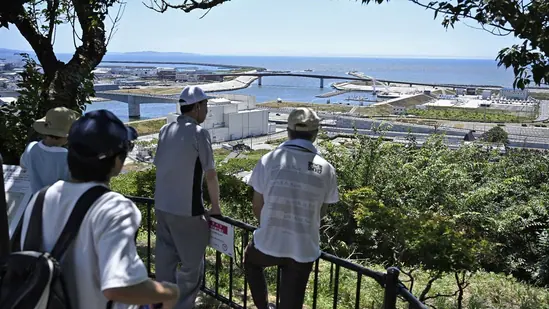A powerful undersea earthquake with an estimated magnitude of 8.7 struck off the coast of Russia’s Kamchatka Peninsula early Wednesday morning, triggering tsunami warnings across large swathes of Japan’s Pacific coastline, including the southernmost prefecture of Okinawa.
By noon, small tsunami waves measuring up to 50 centimeters were reported in parts of northeastern Japan, such as Ishinomaki and Hiroo. Although no major damage has been confirmed yet, authorities remain vigilant, especially in tsunami-prone regions like Okinawa, where coastal communities have been placed on high alert.
Japan’s Meteorological Agency Responds Rapidly
At 8:25 a.m., shortly after the earthquake occurred, the Japan Meteorological Agency (JMA) issued initial tsunami advisories. These were later upgraded to full tsunami warnings for regions spanning from Hokkaido to the Kii Peninsula. The warnings included Okinawa, Tokyo’s Izu and Ogasawara islands, and many other coastal zones.
The agency warned that tsunami waves could reach heights of up to 3 meters. Although the waves that reached Japanese shores were considerably smaller, the alert served as a stark reminder of Japan’s vulnerability to seismic events, especially in places like Okinawa, which sits at a crucial juncture between tectonic plates.
Okinawa Takes Proactive Measures
In Okinawa, emergency services activated evacuation protocols for low-lying coastal areas. Local authorities urged residents to stay away from the shoreline and head to higher ground. Shelters were set up across major islands in the prefecture, and ferry operations to outer islands were temporarily suspended.
The Okinawa Prefectural Government stated, “We are monitoring the situation closely and coordinating with national agencies. While no major tsunami has hit Okinawa yet, the threat is real, and we urge everyone to prioritize safety.”
This proactive response reflects the region’s commitment to disaster preparedness, especially in light of its history with typhoons, earthquakes, and past tsunami threats.
Tourism and Infrastructure Impact
The tsunami advisory came during the peak of Okinawa’s summer tourist season. Popular beach resorts such as Naha, Ishigaki, and Miyakojima reported temporary closures. Though tourists were temporarily inconvenienced, many appreciated the swift government action.
“We were evacuated from the beach within minutes of the announcement,” said a visitor from Tokyo. “It was scary, but it’s reassuring to see how seriously Okinawa takes these warnings.”
While the tourism industry faces short-term disruptions, experts believe the long-term impact will be minimal, especially if no further seismic activity occurs. Nonetheless, tourism operators are reviewing their emergency protocols to enhance visitor safety.
Historical Echoes and Ongoing Vigilance
The event brings back memories of the devastating 2011 Tōhoku earthquake and tsunami, and the more recent January 2024 quake in the Noto Peninsula. In each case, Japan’s improved early warning systems and public preparedness have played critical roles in minimizing loss of life.
For Okinawa, situated near the junction of the Pacific and Philippine Sea plates, such events serve as a crucial test of resilience. With continued investments in early-warning systems and community education, Okinawa is reinforcing its position as a model for disaster response in island territories.
What’s Next for Okinawa and Japan?
Though Wednesday’s tsunami impact was relatively mild, the JMA has not ruled out aftershocks or secondary waves. Coastal residents in Okinawa and other affected areas have been advised to remain cautious over the next 48 hours.
Disaster management agencies continue to assess infrastructure, coordinate logistics, and communicate with residents, ensuring Okinawa remains safe and informed.
Stay informed on the latest developments in Okinawa, Japan’s startup scene, and other key regions by following Startup News. Get daily insights, funding updates, and exclusive reports on emerging tech and innovation across Asia.


AloJapan.com